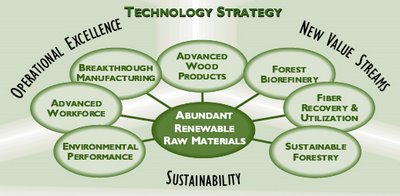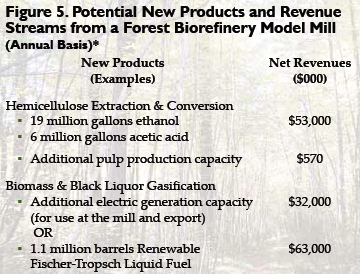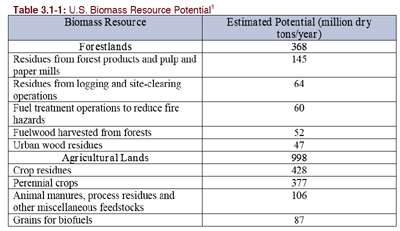 Here's a website I have just found that joins Konrad Imielinski's GoG2G: Converting Green to Green blog for those interested in investing in Cellulosic Ethanol start-ups.
Here's a website I have just found that joins Konrad Imielinski's GoG2G: Converting Green to Green blog for those interested in investing in Cellulosic Ethanol start-ups.
A company called "Vandershield Research" has titled their website Cellulose Ethanol Headquarters. Its mission: "To promote the environment and investor wealth by promoting cellulosic ethanol."
Making money and saving the environment are not mutually exclusive. The knowledgeable investor can become rich and feel good about it by investing in cellulosic ethanol. The more you know about cellulosic ethanol, the more money you'll make and the better you'll feel about the environment. This site is designed to give investors information to help make wise choices.
-Victor Vandershield
They have saved me the trouble of producing a list of many of the
leading cellulosic ethanol companies, along with their stock symbol links for easy investment research:
•
Abengoa ABGOF Constructing the world's first commercial scale cellulosic ethanol biorefinery in Babilafuente (Salamanca), Spain. Commissioning is expected to start by the end of 2006. In 2006 Q4, a partnership was announced with Dyadic.
•
Archer Daniels Midland ADM is agressively studying how to produce cellulosic ethanol out of parts of the corn kernal that are traditionally not used for ethanol.
•
Bioengineering Resources Inc. (BRI) Developed a process that uses gasification, fermentation and distillation to produce ethanol and electricity from a wide array of carbon-based wastes.
•
BlueFire BFRE Plans to use the Arkenol Technology Process (which has been used in Izumi, Japan since 2002) for creating cellulosic ethanol.
•
Broin The largest dry mill ethanol producers in the US, The Broin Companies are collaborating with Novozymes in the research and development of cellulosic ethanol technology.
•
Celunol Purchased a biomass-to-ethanol system from SunOpta which is scheduled to be in production in Jennings, LA by the spring of 2007.
•
Ceres Privately-held plant biotech company utilizing genomics technologies to develop energy crops, such as switchgrass, for cellulosic ethanol.
•
Diversa DVS Partnering with Dupont and researching multiple enzyme "cocktails" to break down cellulosic biomass. Also looking for enzymes in the guts of termites in an attempt to capitalize on the insect's ability to convert wood to energy.
•
DuPont Developing cellulose ethanol technology and planning a demonstration plant.
•
Dyadic DIL Spent over a decade of R&D in the design and development of enzymes for the increasingly efficient extraction of sugars from biomass. In 2006 Q4, a partnership was announced with Abengoa.
•
Genahol Has plans to open cellulose ethanol plants in Long Beach, CA, Chandler, AZ, Columbus, OH, and Orville, OH.
•
Globex GLXI Developing supercritical fluid (SCF) which will be used along with enzymatic hydrolysis for the production of cellulosic ethanol.
•
Green Star Products Inc. GSPI Developed a waterless continuous flow process reactor system which will be used in upcoming cellulose ethanol plants planned for North Carolina and the Northwest.
•
Iogen Corp. Operates a demonstration scale facility to convert biomass to cellulose ethanol using enzymatic hydrolysis technology. Full scale commercial facilities are being planned. It is very likely they will annouce plans for an Idaho plant that will make ethanol from wheat straw.
•
Kergy The Colorado based company, funded by Khosla Ventures, claims it can produce more cellulosic ethanol for a given amount of energy expended than is possible with any other competing process. Just as noteworthy: The design allows them to "bring systems to sources where biomass is most plentiful, instead of having to transport biomass to a central processing site."
•
Nova Fuels (maker of Novahol) Develops biomass-to-fuel conversion facilities (that use gasification technology) with joint venture partners.
•
Novozymes NVZMF Developing enzymes that can convert cellulose into simple sugars, for fermentation into fuel ethanol. Has had collaboration/partnerships with Abengoa and Broin.
•
PureEnergy Developed a two-stage dilute acid hydrolysis technology process which will be used in the forthcoming Green Star Products, Inc projects.
•
SunOpta STKL Built the first cellulosic ethanol plant 20 years ago, in France. In June 2006, SunOpta said it would build the first cellulosic ethanol plant in China. Recently sold a biomass-to-ethanol system to Celunol in what will likely be the first commercial cellulosic ethanol plant in the United States.
•
Virgin Fuels In September 2006, Sir Richard Branson pledged an estimated $3 billion to fight global warming. A large chunk of that is expected to be invested in cellulosic ethanol research and production.
•
Xethanol XNL Recently announced aggressive plans for its new BlueRidgeXethanol company to begin producing cellulose ethanol in Spring Hope, NC by Feb. 2007 using acid hydrolysis. Plans to construct a 50 million gallon per year cellulosic ethanol plant in Augusta, GA which would begin producing ethanol by mid-2007.
technorati
bioenergy,
investment,
venture,
stocks,
biofuels,
cellulosic,
ethanol
 Broadening the Scope - Focusing on Potential
Broadening the Scope - Focusing on Potential
























